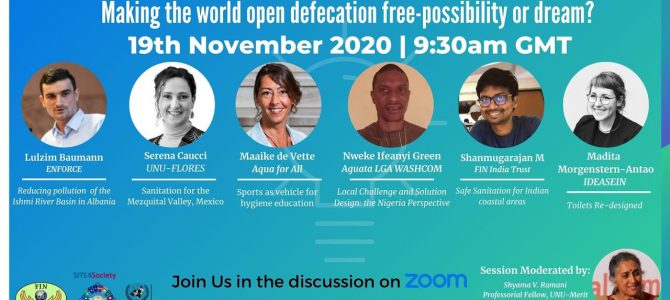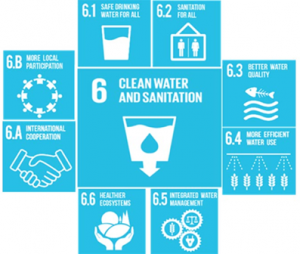 The Sustainable Development Goals Report (2020) highlights that about 2 billion people still do not have access to a functioning toilet and about 4.2 billion people are using toilets that could contaminate water sources. Thus, not only are we are far from being an open-defecation free world, but the state of sanitation could also add further pressure on access to potable water. “This is just beyond imagination”, remarked Prof. Bartel Van de Walle, director of UNU-MERIT. “That this is still the situation today, to have billions suffering from lack of access to basic amenities at a time when we are successfully launching spaceships to an international space station is unacceptable.” Indeed, the global sanitation problem seems like the mythological multi-headed hydra, all connected and sprouting new heads when any beastly head is chopped off. That’s why SITE4Society, UNU-MERIT, joined Friend-In-Need India (FIN) to invite researchers and NGO representatives working on SDG6 to share their insights on November, 19 – World Toilet Day. We invited each of them to describe their solution designs to address a sanitation challenge that has captured their attention.
The Sustainable Development Goals Report (2020) highlights that about 2 billion people still do not have access to a functioning toilet and about 4.2 billion people are using toilets that could contaminate water sources. Thus, not only are we are far from being an open-defecation free world, but the state of sanitation could also add further pressure on access to potable water. “This is just beyond imagination”, remarked Prof. Bartel Van de Walle, director of UNU-MERIT. “That this is still the situation today, to have billions suffering from lack of access to basic amenities at a time when we are successfully launching spaceships to an international space station is unacceptable.” Indeed, the global sanitation problem seems like the mythological multi-headed hydra, all connected and sprouting new heads when any beastly head is chopped off. That’s why SITE4Society, UNU-MERIT, joined Friend-In-Need India (FIN) to invite researchers and NGO representatives working on SDG6 to share their insights on November, 19 – World Toilet Day. We invited each of them to describe their solution designs to address a sanitation challenge that has captured their attention.
River pollution and how citizens can be part of the solution!
Lulzim Baumann, founder and head of ENFORCE (Engineers for Cooperation and Environment) an independent and dedicated group of international experts for sustainable development, presented the sanitation-water nexus most starkly. Speaking about the Ishëm River in his native Albania, he informed us that: “More than 1/3 of Albania’s 2.8 million people live along Ishëm, which is heavily polluted by solid waste and sewage. This is leading to high rates of diarrhoeal disease and an enormous loss of biodiversity (e.g. fish and turtles)”. 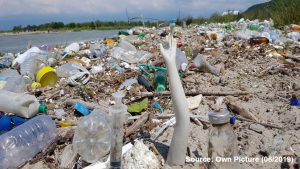
Why is this happening? “First, there is a lack of waste and sewage infrastructure and management with untreated sludge being disposed in the river along with other solid waste. These practises are embedded in a governance system with strong hierarchies alongside unclear responsibilities and frequently changing staff and citizens marked by pessimism and a lack of awareness on environmental issues”.
Lulzim calls for all economic stakeholders to respond. “Even as humble citizens, we can help reduce water pollution by using less laundry detergent in every wash, switching to more ecological detergents made from plant-based alternatives such as soap nuts, soapwort, horse-chestnut etc. and we should stop using fabric softener!”
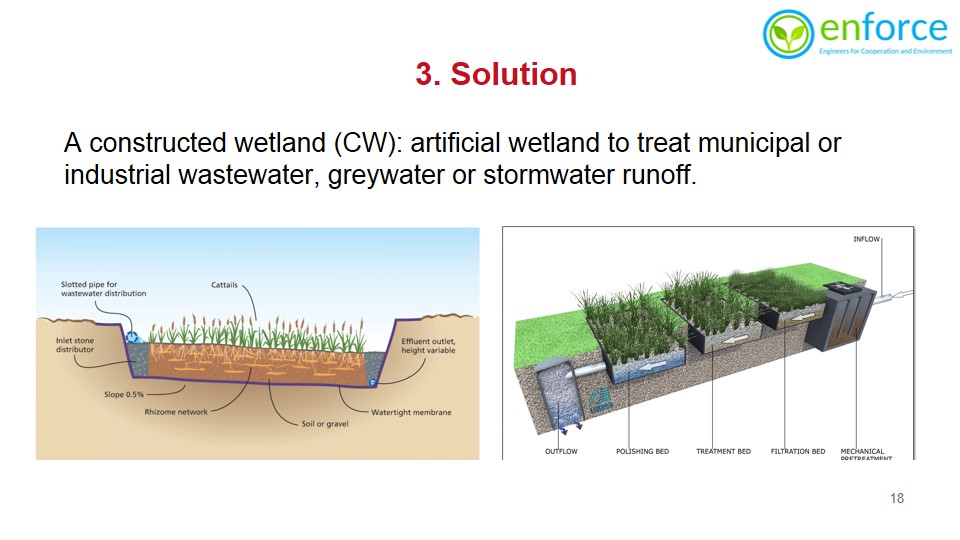
There are also infrastructural solutions. For instance: “A constructed wetland or an artificial wetland can be created to treat municipal and industrial wastewater, greywater and storm-water runoff.”
(for details – see video)
Demand for untreated water and social entrepreneurship catalysed the solution!
Dr. Serena Caucci, an Associate Programme Officer at UNU-FLORES focussing on Circular Economy and Integrated water Management, presented a wonderful case study of social entrepreneurship that transformed the lives of the farming community in the Mezquital Region of Mexico.
Serena traced the origins of the problem: “Mexico city is below sea level and to avoid flooding, there were canals built to take away rainwater. But, as it became a mega-city, water had to be piped into Mexico city from adjacent rural areas to satisfy the demand for water – creating an enormous pressure on water supplies in the rural areas which were also growing the foods for the residents of Mexico city.”
“To address this water crisis, initially untreated waste water from Mexico city was diverted back to the rural areas, but being untreated the incidence of excreta related diseases increased there exponentially. Early stage leukaemia and kidney disease began to rear their ugly head among even the young as untreated wastewater often carries a lot of heavy metals.” But the story has a happy ending, Serena assured us: “A single man started demanding change triggering a community movement and the creation of a para-governmental unit. This organisation brought together the local community and the municipality in a unique public-private partnership that set up a successful waste water treatment plant!”
(for details – see video)
Poor hygiene behaviour in schools? Make room for gamified education!
Maaike de Vette, a Senior Planning, Monitoring & Evaluation (PME) and Learning Manager at ‘Aqua for All’ identified the three main challenges of WASH (or water, sanitation, and hygiene behaviour) of developing country schools as:
1. Operational: getting the finances for installing toilet facilities, maintaining them and processing the faecal sludge;
2. Governance: getting the school management and staffs and parents to agree to initiating and supporting WASH change;
3. Behavioural change in students: making it happen and sustaining it.
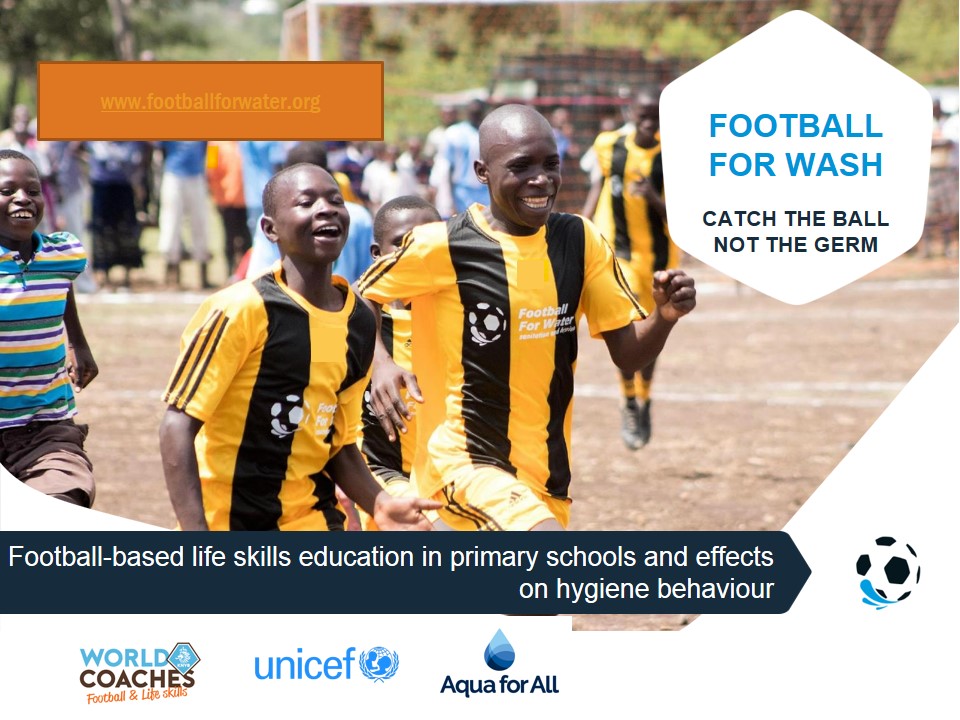
Here, started the most fascinating part of her narrative: “We teamed up with Football for Water and conducted research. Whenever gamified hygiene behaviour lessons were introduced along with sanitation infrastructure – open defecation reduced, vandalism in toilets by students reduced, girl’s absenteeism reduced significantly! Moreover, this had a community impact – we saw a decrease in reported vandalism and open defecation. And when I’m talking about vandalism, I’m talking about vandalism of the school facilities done by the community.”
Maaike added: “Cognitive abilities, self-confidence, ambition, and school performance improved. And of course, there was a significant drop in diarrhoea incidence along with reductions of cough and influenza. Now this last point is interesting during the current covid pandemic, because these are more airborne diseases, and clearly hygiene can also affect these.”
How exactly does playing football achieve this? (to know – see video)
What we need to do to make Nigeria ODF? We need WASHComs!
Nweke Ifeanyi Green, Chirman of the Aguata LGA WASHCOM (i.e. A Water, Sanitation and Hygiene Committee) Federation gave us a very useful perspective advocating a three-pronged solution to make Nigeria ODF:
1. community mobilisation;
2. support from the government for NGOs to carry out this work;
3. WASH education in schools and colleges.
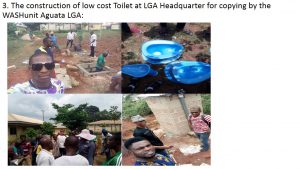
He explained that: “Community engagement is much more than just reaching out to people! Nigeria is a country of different communities and within every village and town there are different sub-communities. You need to know them and you need to communicate with each of them differently – youth, women, elderly – to get their leaders on board.” He continued, “In 2019, the President of Nigeria declared that Nigeria is expected to become ODF by 2025. This is wonderful, but for that the government needs to hire the services of WASHComs, because we know the people and have relationships with them. Currently, the revenue lines of WASHComs like ours are very weak, but if we had resources, we could do a great job. If the government can support and coordinate with grassroots WASHComs surely Nigeria can become ODF. Likewise, WASHComs can help to integrate WASH programs into the education school curriculum from primary level to the tertiary education system for sustainability.”
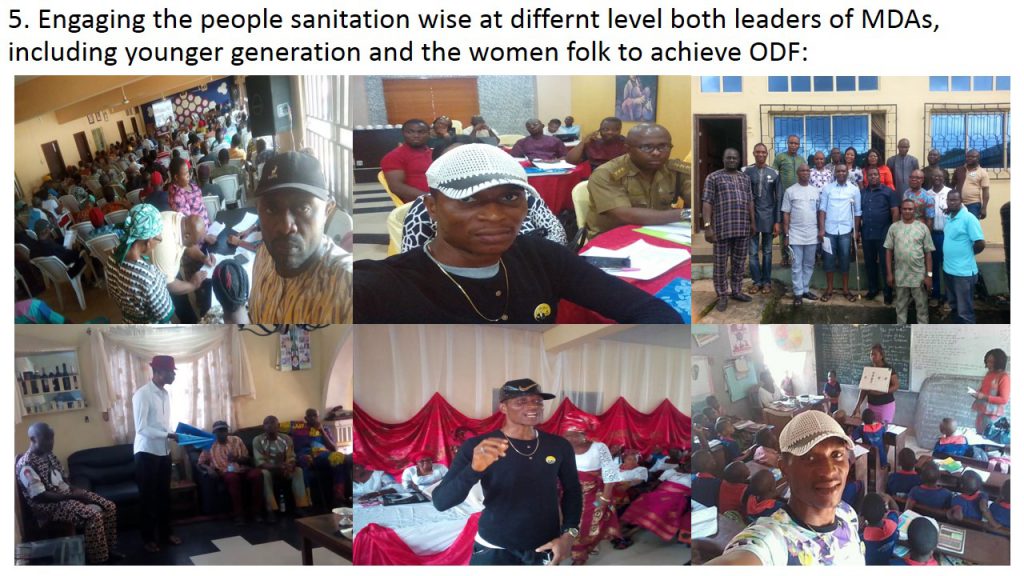
(for details – see video)
Contaminating toilets along coastal villages? Let’s change the toilet design!
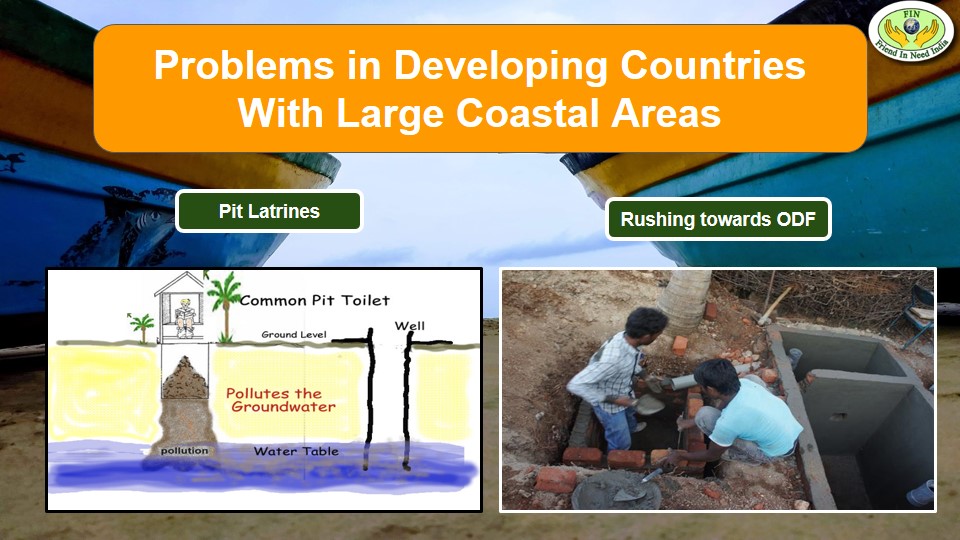
Shanmugarajan, Volunteer at Friend In Need India Trust (FIN), where he is an educator and mentor, succinctly presented the essence FIN learnings on safe sanitation for coastal areas. He first presented the Clean India Mission, an ongoing national flagship programme, which calls for universal sanitation coverage that is safe for the environment and effectively used.
“However the safety criterion is not being met in coastal areas, as the pit latrine model diffused under the national programme simply doesn’t work in areas with a high water table. Instead, pit latrines contaminate ground water sources and set into motion a vicious cycle of ill-health. Nevertheless, because they are cheap and easy to build they continue to be constructed.”
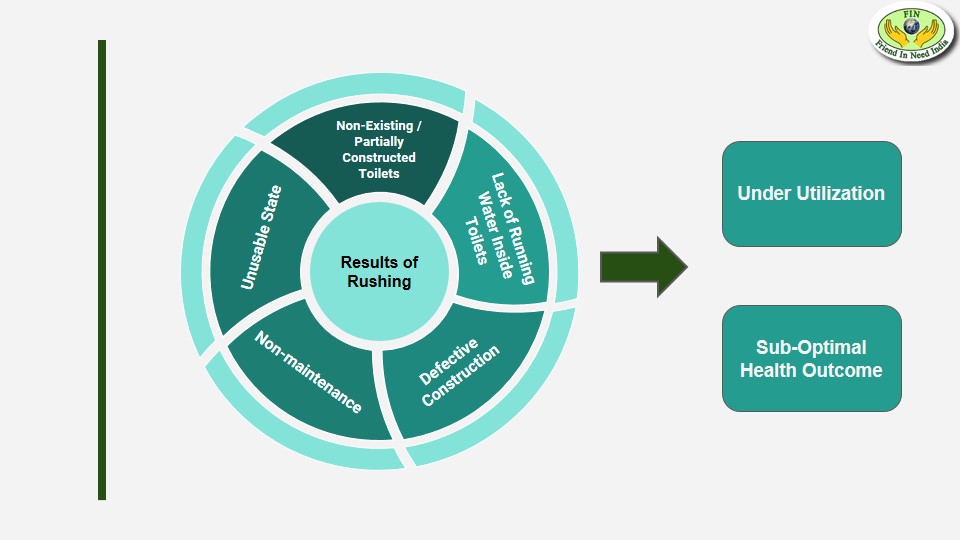
But, as FIN operates in a coastal village, he explained: “We had to come up with an alternative. It’s called an eco-san toilet. The toilet slab is built so that the urine and faeces are separated and the faeces is dried separately to become compost and then used to grow fruit trees. The toilet generates multiple values as it not only provides dignity, but also improves health and creates free compost! Thus, despite the fact that the eco-san model is not easy to build or use, through steady accompaniment and motivation, eco-san toilet usage is thriving in Kameswaram village and is generating demand for this circular model by word-of-mouth.”
(for details – see video)
Thousands of abandoned toilets? Let’s re- design the whole approach!
Madita Morgenstern-Antao, a product Designer and co-founder of Innovation hub IDEASEIN brought us back to the basics: “It’s time for a break in the way we are currently implementing toilet solutions across the globe. Yes, there are still 700 million people left behind for still shitting unprotected in the open. Even as we speak – toilets are getting built for them. But, I have seen so many abandoned toilets in developing countries – even recently built! I’ve searched for exact data on abandoned toilets everywhere. But, nobody seems to have the answer. So why don’t we do it right –for the remaining millions of toilets?”
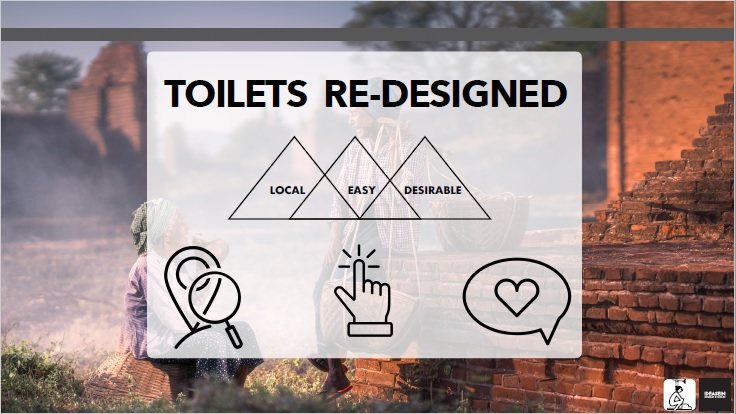
For this, she introduced the designer approach: “As designers, my husband Nikhil Antao and I have developed a holistic three step approach:
1. Communicating about the toilet usage and upkeep in an understandable way incorporating toilet usage instructions into the physical toilet, ensuring that the chosen forms and materials communicate with the user.
2. Design local for local, integrating constraints of behaviour, materials, laws, social norms etc. through extensively interacting with local community members;
3. Create a desirable product that ensures long term usage, and also design a behavioural change alongside by ensuring that it is aspirational and improves their status in the community and for the community.
(for details – see video)
To sum up, our speakers identified the following aspects of the sanitation challenge as shortcomings: fit of toilet design to local geography, quality of the infrastructure, accompaniment of communities as they effectuated this enormous behavioural change and safe collection and processing of faecal waste. They also offered hope for change – through advocacy, action and innovation. So, the remaining 2 billion toilets to be built should be better.
Report by Prof. Shyama V. Ramani

